The Google Display Network provides a variety of targeting options to reach existing and prospective customers at every stage in their purchase journey.
A powerful system that reaches more than 2 million websites, the Google Display Network can get your ads in front of targeted audiences across the globe.
According to Google, consumers spend 21% of their time online searching but the other 79% of the time online is spent outside search across websites, mobile, YouTube, and Gmail.
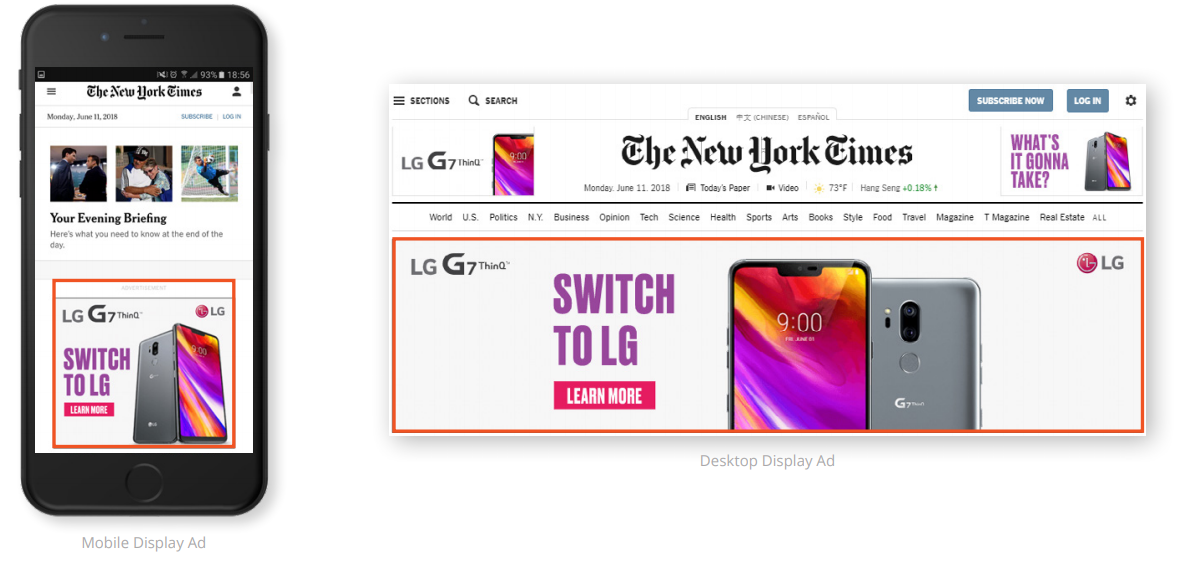
Leveraging the Display Network allows advertisers to reach prospects when they’re viewing a news video, playing a game on their phone or even as
they check their email.
Most importantly, it allows brands to reach prospects early on in the buying cycle—when they’re still researching, weighing their options or, possibly, even unaware they need your services.
In the following article, we deep dive into our own full funnel approach and how strategic marketing investments across targeted audience types (from new customers to past purchasers) can help your business grow.
Google Display Network Audience Targeting:
The Google Display Network provides advertisers with the option to build / target an audience. In the following section, we explain the differences (and when to target) the following audience types.
GDN “Interest Targeting” Audience Types include:
- Custom Affinity
- In-Market
- Custom Intent
- Similar Audiences
As seen below, each segment encompasses a full-funneled approach to maximizing reach, while focusing on those consumers most likely to respond positively to the brand.
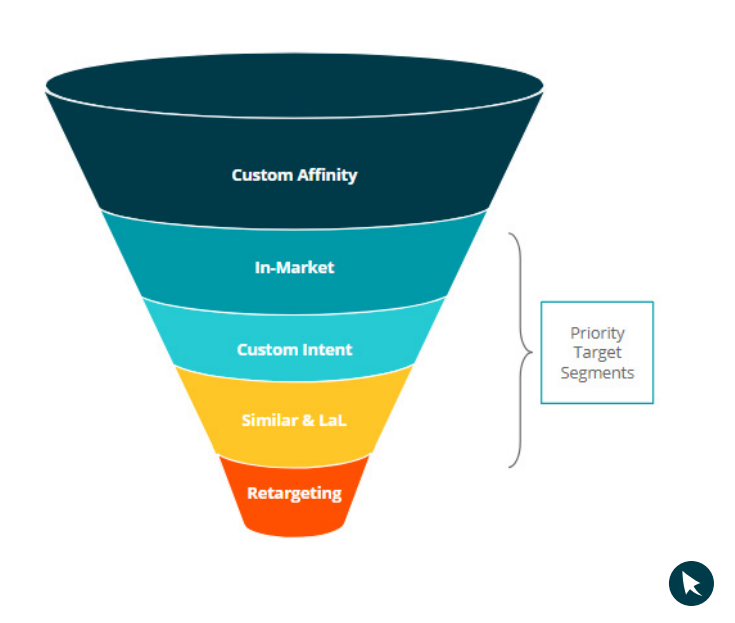
How To Apply GDN Audience Types Based on Your Business Goals:
Now that we have a better understanding of how the audience targeting funnel is structured, let’s apply this to some case uses and explain exactly why you would select one audience targeting method over another.
Business Objective 1: I want to increase my overall brand awareness but avoid wasting ad spend on unqualified prospects.
Solution: Custom Affinity Audiences (Upper Funnel)
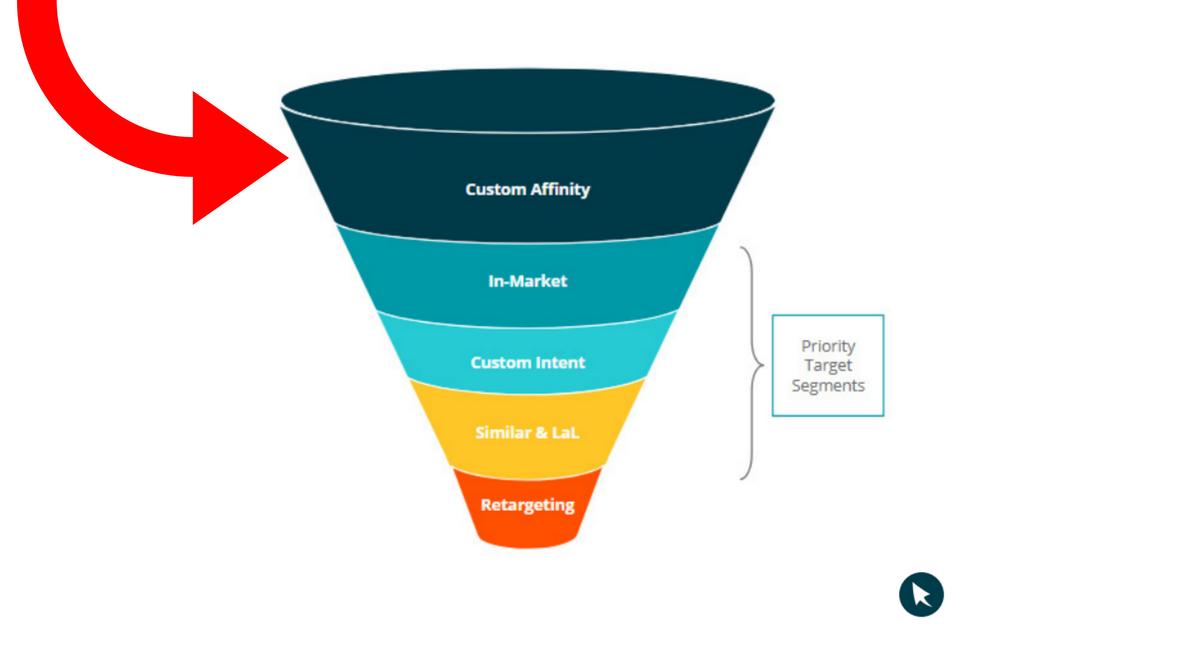
Why: This audience type gives marketers the option to create their own, highly tailored audience in AdWords based on their most recent web activity.
Google pools together data from user search history, keywords used and website visits that gives marketers a better overall picture of a target user’s behavior. Using this data allows marketers to better control their targeting with smaller and more refined audiences.

Google gives a great example of how marketers can leverage custom affinity audiences to reach marathon runners. For example,
rather than reaching the Sports Fans affinity audience, a running shoe company may want to reach Avid Marathon Runners instead.
With custom affinity audiences, the shoe company can further define this audience by:
• Entering interests like 5K in San Francisco, triathlon athlete, or long distance runner.
• Using URLs of websites with content about running, training schedules, marathon nutrition, and other marathon themes.
• Entering places that an Avid Marathon Runner might be interested in like gyms, sporting goods stores, and natural supermarkets, or
• Entering apps in the Health & Fitness category that an Avid Marathon Runner may likely be interested in like Google Fit.
“Custom affinity audiences give you the opportunity to target different audiences and doesn’t limit you to the predefined segments that Google has for in-market, affinity, etc,” Dianne Manansala, Lead Retail Search Manager at CPC Strategy said.
“This is especially helpful if you’re selling products that are super specific or niche. You can create audiences using keywords, URLs, places, and even apps.”

“We’ve seen good results using Custom Affinity Audiences for branding and awareness, and these performed really well in terms of quality impressions and wide reach. Running against other custom affinity targeting layered with topic targeting has also worked really well in terms of impressions, low CPCs, and low bounce rates.”
Business Objective 2: I want to target audiences that have shown a strong intent to purchase.
Solution: In-Market Audiences (Upper – Middle Funnel)
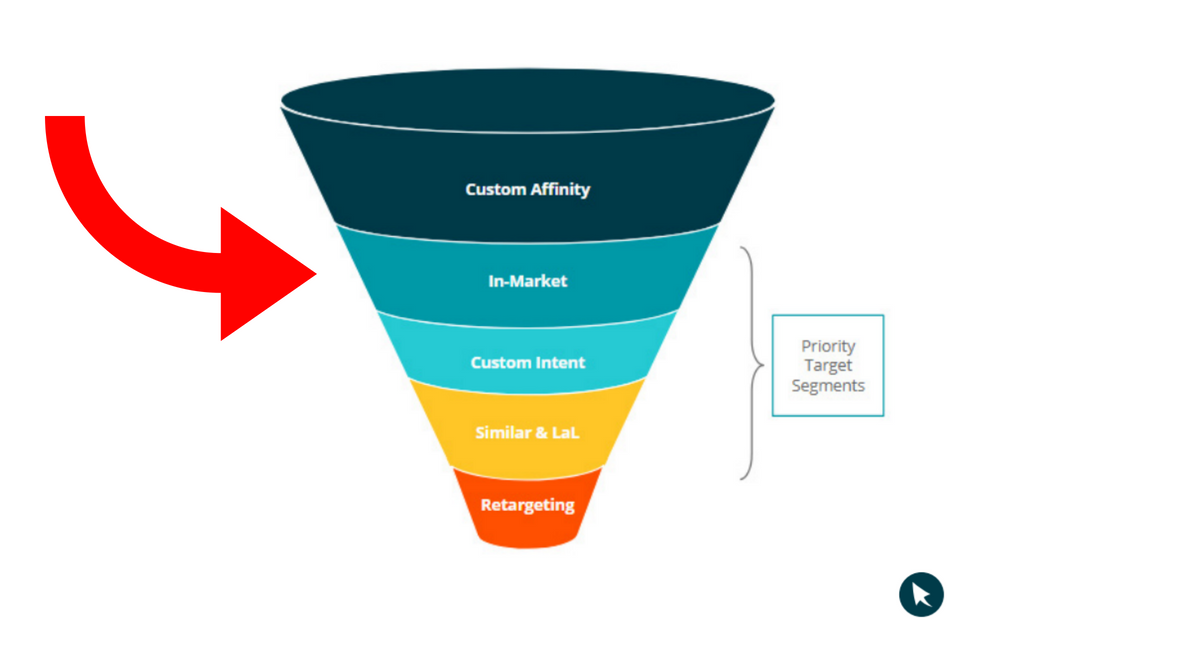
Why: Google utilizes sophisticated algorithms, including signals like site content and recency, to differentiate “interest” from “intent” in real time and serve ads to users close to conversion. In-market audiences are groups of users who have shown intent to compare and purchase a specific category of product.
This can be valuable for marketers seeking high-intent shoppers that are looking for a particular item. However, keep in mind this in-market intent is temporary and doesn’t paint an overall picture of a user.
Business Objective 3: I want to build and target customized audiences that have shown a strong intent to purchase.
Solution: Custom Intent Audiences (Middle Funnel)
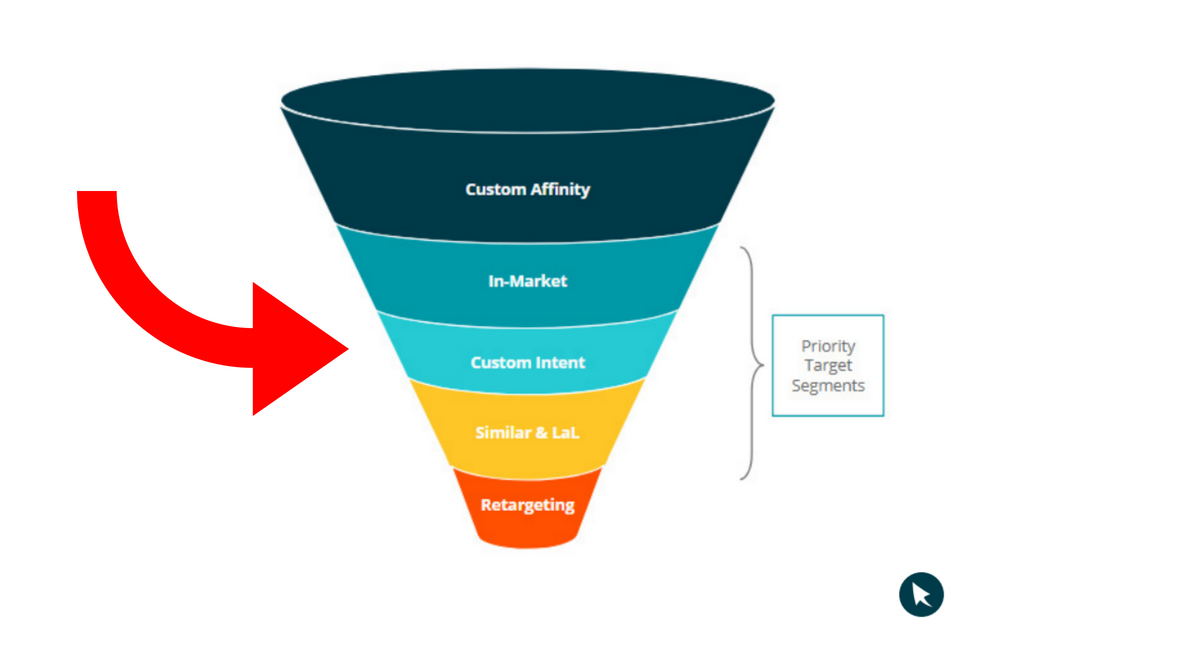
Why: As part of its mass release of new features late last year, Google rolled out a new targeting tool for its Display Network advertisers – Google Custom Intent Audiences.
You can basically think of Custom Intent as a “customizable in-market audience” located further down the purchasing funnel. In comparison to In-Market Audiences, this tool actually lets you build audiences who, more than likely, intend to buy the products and services you offer sometime in the foreseeable future.
To learn more check out, “Making the Most of Custom Intent Audiences”.
Business Objective 4: I want to target audiences similar to my current site purchasers.
Solution: Similar Audiences (Middle – Lower Funnel)
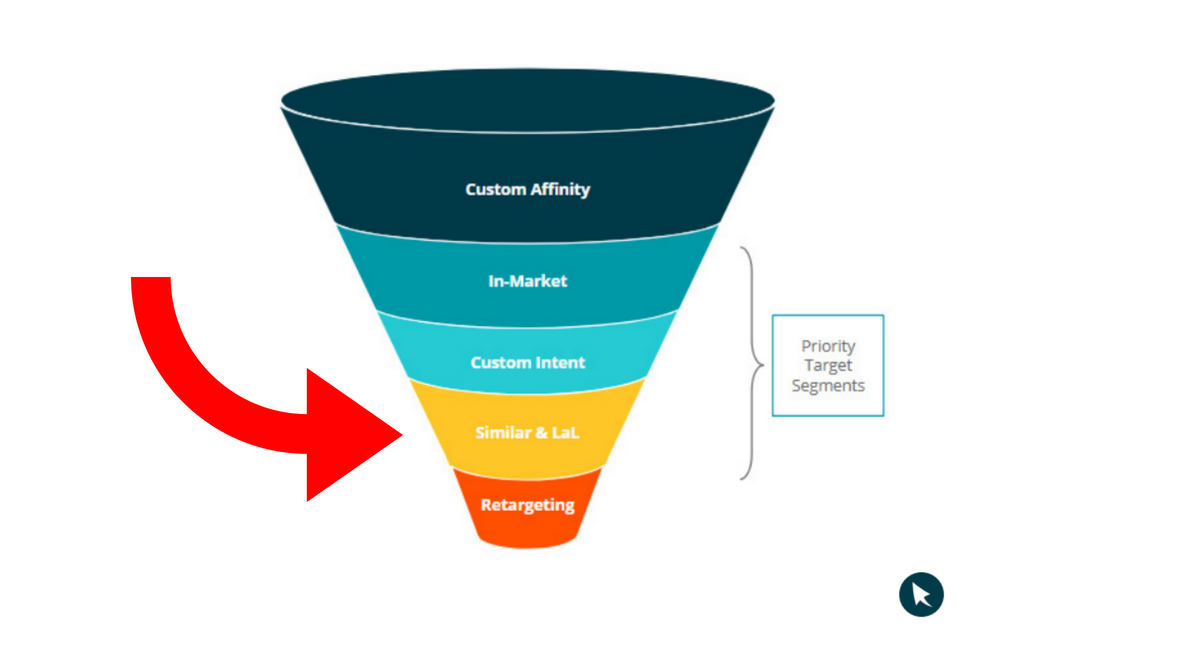
Why: Using Similar Audiences you can find new audiences who share characteristics with your site visitors or better yet, your past purchasers. On the Facebook side – this is also referred to as “Lookalike Audiences”.
Pro-Tips from the Experts:
“Don’t expect your upper funnel campaigns to perform exactly like your Search campaigns,” Josh Brisco, Senior Manager, Retail Search Operations at CPC Strategy said.

“Keep in mind, your Display advertising strategy is likely to address a completely different list of business objectives than your Search ads. It is considered best practice to have a separate ROI or a “blended goal” for Display campaigns. Google Display Network campaign efforts will likely focus on metrics such as Impressions, Clicks, Conversions & View-Through Conversions (VTC).”
To learn more about how to leverage the Google Display Network to drive brand awareness and fuel growth, email [email protected].
You Might Be Interested In












